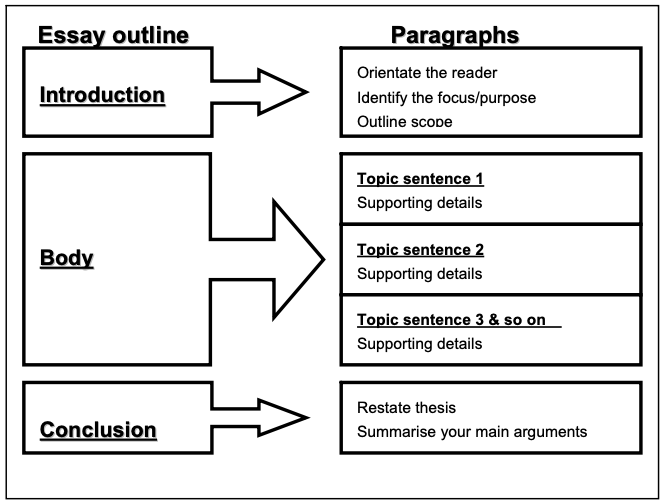
Writing an academic essay entails putting together a coherent set of ideas into an argument. Essays must present their ideas in the order that makes the most sense to a reader because they are essentially linear (they offer one idea at a time). Attending to a reader’s logic is essential for successfully structuring an essay. The structure of such an essay is predetermined by its focus. It specifies what information readers must know and in what order they must receive it. As a result, the structure of your essay must be specific to the main claim you’re making. There are guidelines for writing certain classic essay types (for example, argumentative essays), but no set formula. Generally, an essay has three components.
1. Introduction
The introduction is the essay’s first paragraph, serving several purposes. This paragraph gets your reader’s attention, develops the basic ideas of what you will cover, and provides the thesis statement for the essay. The thesis statement is usually only one sentence and comprises the essay’s topic, focus, and three main points. Your thesis statement MUST be succinct because it will be connected with every body paragraph.
2. Body
For every body paragraph, begin with a transition, such as To begin with or First. There are transitional words that indicate similarity, while others indicate contradiction. The transition words like additionally, furthermore, and similarly add information, reinforce ideas, and express agreement with preceding paragraphs. Transition phrases like although, instead, notwithstanding, however, nevertheless, or besides express that there is evidence to the contrary or point out alternatives and thus introduce a change in the line of reasoning (contrast). Your topic sentence should then follow the first sentence. The topic sentence, similar to a smaller-level thesis statement, tells your reader about the paragraph. The remaining sentences in the paragraph will be supporting sentences. These sentences, at least four of them, will help your reader understand your topic sentence.
